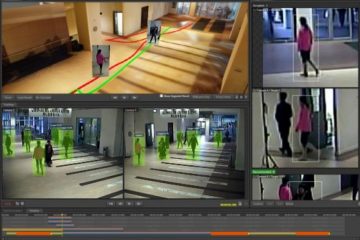Best Practices for Data Acquisition in Digital Forensics

In the field of digital forensics, data acquisition plays a crucial role in gathering evidence from various computing systems. Whether it’s for investigating cybercrimes, conducting internal investigations, or recovering lost data, having the right tools and techniques for data acquisition is essential. In this article, we will discuss some of the best practices for data acquisition in digital forensics, including the use of digital forensics tools, data acquisition systems, and computing systems.
Introduction to Digital Forensics
Digital forensics is a branch of forensic science that deals with the recovery and investigation of material found in digital devices. This can include computers, mobile phones, USB drives, and other electronic devices. Digital forensics is often used in criminal investigations, corporate investigations, and civil litigation cases to gather evidence and analyze information stored on these devices.
One of the key components of digital forensics is data acquisition, which involves making a copy of data from a device to preserve its integrity and ensure that the original data remains unchanged. This process is crucial in ensuring that the evidence collected is admissible in court and can withstand scrutiny from opposing parties.

Digital Forensics Tools
When it comes to data acquisition in digital forensics, having the right tools is essential. There are various digital forensics tools available in the market that can help forensic investigators acquire data from different types of devices. These tools are designed to extract data in a forensically sound manner, ensuring that the integrity of the evidence is preserved.
Some popular digital forensics tools include EnCase, FTK (Forensic Toolkit), X-Ways Forensics, and Autopsy. These tools offer a wide range of features such as disk imaging, file carving, metadata extraction, and keyword searching. By using these tools, forensic investigators can extract data from a device, analyze it, and present it as evidence in court.
Data Acquisition Systems
In addition to digital forensics tools, data acquisition systems are also essential for acquiring data from computing systems. These systems are designed to capture data from a variety of sources, including hard drives, solid-state drives, memory cards, and mobile devices. Data acquisition systems can perform a bit-by-bit copy of the original data, ensuring that all digital artifacts are preserved.
One of the leading providers of data acquisition systems for digital forensics is DaeTech Systems. Their industrial solutions offer a range of data acquisition systems that are specifically designed for forensic investigations. These systems are capable of acquiring data from a wide range of computing systems, including Windows, macOS, Linux, and mobile devices.

Computing Systems
When it comes to data acquisition in digital forensics, it’s important to consider the computing systems from which data is being acquired. Each computing system has its own set of challenges and requirements when it comes to acquiring data. For example, acquiring data from a Windows computer may require different tools and techniques than acquiring data from a macOS or Linux computer.
Forensic investigators need to have a good understanding of the computing systems they are dealing with in order to effectively acquire data. This includes knowing how to bypass encryption, recover deleted files, and extract metadata from different file systems. By using the right tools and techniques, forensic investigators can ensure that they acquire all relevant data from a computing system.
Conclusion
In conclusion, data acquisition is a critical step in digital forensics that requires the use of the right tools, systems, and techniques. By following best practices for data acquisition, forensic investigators can ensure that the evidence they collect is admissible in court and can withstand scrutiny. With the advancements in digital forensics tools and data acquisition systems, forensic investigators now have more resources at their disposal to effectively acquire data from a wide range of computing systems. By staying updated on the latest trends and technologies in digital forensics, forensic investigators can continue to improve their data acquisition practices and solve complex investigations.
















